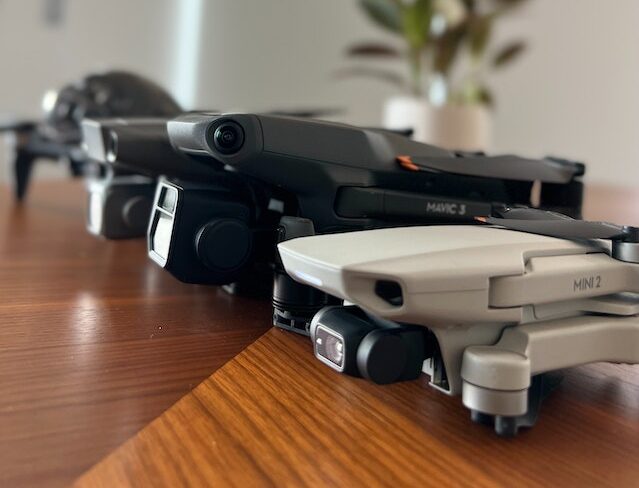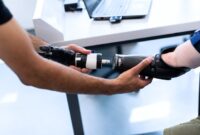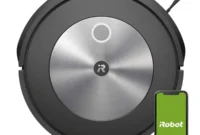Drones have revolutionized the way we capture aerial footage, providing filmmakers, photographers, and enthusiasts with a unique perspective from the sky. However, capturing smooth and stable footage can be challenging due to the inherent instability of drones in flight. This is where drone gimbals come into play. In this article, we will explore the role of drone gimbals in perfecting aerial footage and delve into the various aspects you need to consider when choosing and using a gimbal for your drone.

What is a drone gimbal?
A drone gimbal is a stabilization system that helps eliminate unwanted camera movements and vibrations caused by the drone’s flight dynamics. It consists of motors, sensors, and gyroscopes that work together to keep the camera level and counteract any unwanted motion. By using a drone gimbal, you can achieve smooth, professional-looking footage even in challenging flight conditions.
Importance of stable footage
Stable footage is crucial when capturing aerial shots. It enhances the overall quality of the footage, making it more enjoyable and visually appealing to the viewers. Unstable footage, on the other hand, can be disorienting and distracting, diminishing the impact of your shots. Whether you are shooting a film, documenting an event, or creating stunning visuals for marketing purposes, stable footage is essential to make a lasting impression.
How drone gimbals work
Drone gimbals employ a combination of motors and sensors to stabilize the camera during flight. The sensors detect any movement or tilt of the drone and relay that information to the motors. The motors then make rapid adjustments to keep the camera level and counteract any unwanted motion. This continuous adjustment ensures that the camera remains steady, allowing you to capture smooth and stable footage.
Types of drone gimbals
There are different types of drone gimbals available, each with its own set of features and capabilities. Some common types include mechanical gimbals, three-axis gimbals, and hybrid gimbals.
Mechanical gimbals
Mechanical gimbals use a combination of springs and weights to stabilize the camera. They are generally less expensive but offer limited stabilization compared to more advanced gimbals.
Three-axis gimbals
Three-axis gimbals are the most common and widely used gimbals. They stabilize the camera on three axes: pitch, roll, and yaw. This allows for precise control and stabilization, resulting in smooth footage even during aggressive maneuvers.
Hybrid gimbals
Hybrid gimbals combine the benefits of mechanical and three-axis gimbals. They use both motors and mechanical components to provide stabilization, offering a good balance between affordability and performance.
Factors to consider when choosing a drone gimbal
When selecting a drone gimbal, there are several factors you should consider to ensure it meets your specific needs and requirements.
Payload capacity
The gimbal should be capable of supporting the weight of your camera and any additional accessories you plan to use, such as lenses or filters. It is essential to check the payload capacity of the gimbal to avoid overloading it, which can lead to decreased stability and performance.
Compatibility
Ensure that the gimbal you choose is compatible with your drone model. Different drones may have specific mounting systems or connectors, so it is crucial to verify compatibility before making a purchase.
Stability
Look for gimbals that offer advanced stabilization features, such as precise motor control and intelligent algorithms. These features contribute to better stability, allowing you to capture smooth footage even in challenging conditions.
Control options
Consider the control options available for the gimbal. Some gimbals can be controlled directly from the drone’s remote controller, while others may require a separate controller or smartphone app. Choose a gimbal that offers convenient and intuitive control options for your workflow.
Price
Gimbals are available at various price points, so it is essential to consider your budget. While more expensive gimbals may offer advanced features and better performance, there are also affordable options that provide decent stabilization for casual users.
Benefits of using a drone gimbal
Using a drone gimbal offers several benefits that can elevate the quality of your aerial footage.
Smooth and stable footage
The primary benefit of a drone gimbal is the ability to capture smooth and stable footage. By eliminating unwanted camera movements and vibrations, gimbals provide a professional look to your shots, making them more captivating and engaging.
Increased versatility
With a gimbal, you can explore creative angles and camera movements that would be difficult to achieve manually. Gimbals allow for precise control, enabling you to capture cinematic shots, sweeping panoramas, or dynamic tracking shots with ease.
Professional-grade results
A gimbal adds a level of professionalism to your aerial footage. Whether you are a filmmaker, videographer, or content creator, using a gimbal elevates the quality of your work, making it stand out and leaving a lasting impression on your audience.
Tips for perfecting aerial footage with a drone gimbal
To make the most of your drone gimbal and capture stunning aerial footage, consider the following tips:
Proper balancing
Ensure that your camera and gimbal are properly balanced before taking flight. Proper balancing ensures optimal performance and stability, preventing unwanted vibrations or oscillations during flight.
Adjusting settings
Take the time to adjust the settings of your gimbal to suit your specific shooting requirements. You can adjust parameters such as motor strength, follow speed, and tilt angles to achieve the desired results.
Smooth movements
When operating the drone with a gimbal, focus on making smooth and controlled movements. Avoid abrupt or jerky motions, as they can negatively impact the stability of the footage. Practice slow and steady maneuvers to capture buttery-smooth shots.
Creative techniques
Experiment with different creative techniques to add depth and variety to your aerial footage. Try incorporating pans, tilts, or orbiting movements to create visually dynamic shots that engage the viewer. Get creative and let your imagination soar!
Best practices for maintaining and caring for a drone gimbal
To ensure the longevity and optimal performance of your drone gimbal, follow these best practices:
Regular cleaning
Keep your gimbal clean and free from dust, dirt, and debris. Regularly inspect and clean the motors, bearings, and connectors to prevent any potential issues caused by dirt buildup.
Safe transportation
When transporting your drone and gimbal, use a sturdy case or bag to protect them from accidental bumps or impacts. Secure the gimbal to prevent any movement or stress during transportation.
Firmware updates
Stay up to date with firmware updates for your gimbal. Manufacturers often release firmware updates to improve performance, add new features, or address any issues. Regularly check for updates and install them as recommended.
Proper storage
Store your gimbal in a safe and dry location when not in use. Avoid exposing it to extreme temperatures or humidity, as it can damage the internal components. Storing the gimbal properly ensures its longevity and reliability.
Conclusion
Drone gimbals play a crucial role in perfecting aerial footage by providing stability and eliminating unwanted camera movements. They enable filmmakers, photographers, and enthusiasts to capture smooth and professional-looking shots from the sky. By considering the factors mentioned above and following the tips and best practices, you can maximize the potential of your drone gimbal and create stunning aerial footage that leaves a lasting impression.
FAQs
1. Can I use any gimbal with my drone?
Gimbal compatibility varies depending on the drone model and its mounting system. It is essential to check the compatibility of the gimbal with your specific drone before making a purchase.
2. How do I balance the camera on the gimbal?
Balancing the camera on the gimbal involves adjusting the position of the camera and counterweights to achieve proper balance. Consult the gimbal’s user manual or online tutorials for specific instructions based on your gimbal model.
3. Can I use a gimbal for both photography and videography?
Yes, gimbals are versatile tools that can be used for both photography and videography. They provide stabilization for both still shots and video recordings, enhancing the overall quality of your aerial footage.
4. Are gimbals only for professional filmmakers?
While gimbals are popular among professional filmmakers, they are also suitable for enthusiasts and hobbyists. Whether you are a professional or a casual user, a gimbal can significantly enhance the quality of your aerial footage.
5. How long can a gimbal’s battery last?
The battery life of a gimbal depends on various factors, including the model, usage, and settings. Most gimbals offer several hours of continuous operation on a single charge. It is advisable to carry spare batteries or a power bank for extended shooting sessions.


